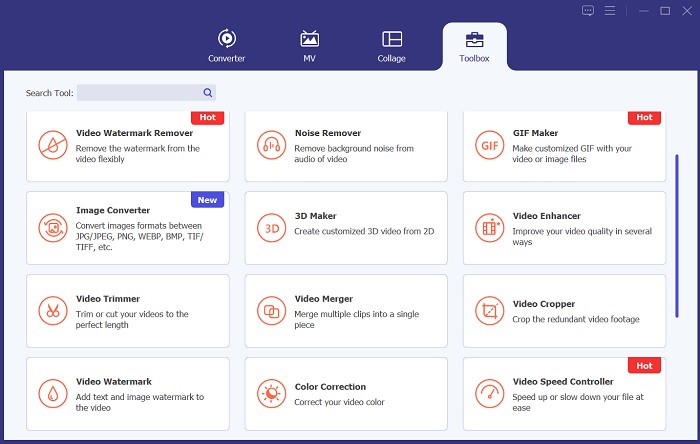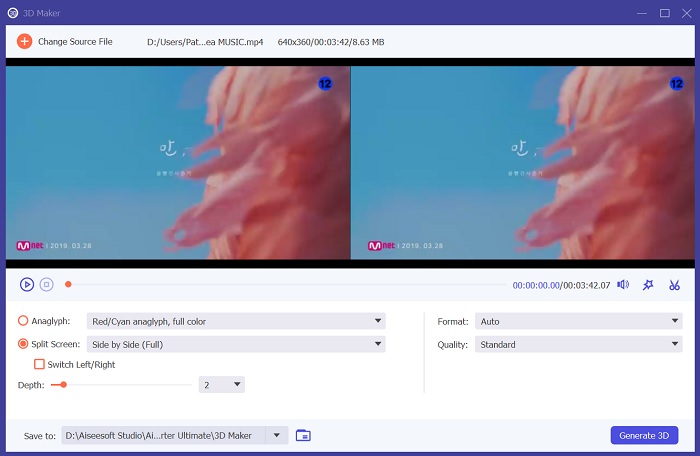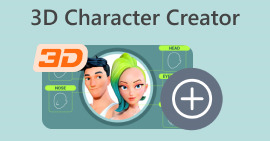Difference Between 2D and 3D Movies? Find More Information About These Two
Animation creates the illusion of movement and form change by rapidly depicting static pictures that minimally vary from each other. It is an art form that has been around for over a century and has evolved significantly. Today, animation is used in various fields, including entertainment, education, advertising, and more. It can be done by hand-drawing each frame, using computer software to create 3D models, or a combination of both techniques. Animation has revolutionized how we tell stories and communicate ideas, and it continues to be a powerful tool in the modern world. In this article, we will unravel and review the difference between 2D vs 3D animation.

Part 1. What Are 2D and 3D
2D animation is a traditional format that involves creating a sequence of drawings or illustrations displayed in a rapid series to create the illusion of movement. Unlike 3D animation, 2D animation typically involves creating flat images without depth or perspective. This style of animation has been around since the early days of animation. It is still widely used today in everything from cartoons and animated films to video games and advertisements.
3D animation is a type of animation that involves creating three-dimensional models and environments that can be controlled and animated in different forms. Unlike 2D animation, 3D animation allows for creating images with depth and perspective, making them appear more realistic and immersive. This animation style is commonly used in movies, video games, and virtual reality experiences. It requires specialized software and skills to create the models and environments, but the result can be awe-inspiring and visually stunning.
Part 2. Differences Between 2D and 3D
1. Difference Between 2D and 3D Images/Videos
2D images and videos are flat and have only two dimensions: length and width. They show objects as they appear from a single viewpoint. On the other hand, 3D images and videos have depth in addition to width and length. They allow you to see objects from different angles and perspectives, giving a more immersive experience. 3D images and videos are created using specialized software and hardware, while 2D images and videos can be captured using basic cameras and phones.
2. 2D vs 3D Ultrasound
In pregnancy, 2D and 3D are beneficial to monitor a developing child in a mother's womb. 2D ultrasound uses high-frequency sound waves to create two-dimensional images of a developing fetus. It's the most commonly used type of ultrasound during pregnancy, and it can provide valuable information about the baby's growth and development. On the other hand, 3D ultrasound uses a similar technology but creates three-dimensional images of the fetus. This type of ultrasound can provide a more detailed look at the baby's features and movements, but it's only sometimes necessary for routine prenatal care.
3. Image Effect
When we say animation, 2D and 3D animation have different visual styles and techniques. 2D is created by drawing objects and backgrounds on a flat surface, while 3D animation is created by modeling characters and objects in a three-dimensional space. One of the main differences is the level of realism they can achieve. While 2D animation is often associated with a more stylized and cartoonish look, 3D animation can be used to create highly realistic environments and characters.
When it comes to image effects, both types of energy can make use of various techniques to enhance their visuals. For example, 2D animation can use motion blur, lighting effects, and color grading to add depth and dimension to its images. Similarly, 3D animation can use depth of field, lens flares, and particle effects to create a more immersive and dynamic visual experience.
4. Layer and Dimension
The main contrast between 2D and 3D is that 2D refers to a two-dimensional object or shape, which only has length and width, while 3D refers to a three-dimensional object or form, which has length, width, and depth. Regarding layers and dimensions, a 2D object typically has only one layer and two dimensions, while a 3D object can have multiple layers and three dimensions. Additionally, a 3D object can be viewed from different angles, which allows for a more immersive and realistic experience.
5. Application on Industry
2D and 3D animation are crucial and still the most used techniques to create and animate objects. Since they are not similar in appearance, these animation techniques are applied to different industries. In the entertainment industry, most cartoons were created using 2D animation techniques. You can only view the object from a certain angle; the illusion is limited to that specific dimension. Manga, Digital reading materials, cartoons, and Anime are some of the samples that use 2D animation.
On the other hand, 3D animation is mostly used in a more extensive and much more realistic approach. The film industry commonly uses 3D animation to create optical effects that are hard to replicate or perform outside the fantasy or realm of your specific film. This 3D technique will allow users to create animation that no longer needs to be shot in real life. This animation is also commonly used by creators of mobile games, video games, and other related industries.
6. Can 2D animation be converted to 3D, and vice versa?
Yes, it is possible to convert 2D animation to 3D and vice versa. However, the process can be complicated and time-consuming, depending on the complexity of the animation. In general, converting 2D animation to 3D involves making a 3D model of the characters and environments and then animating them in a 3D space. Conversely, you can convert 3D animation to 2D perspective. It is much simpler to do in an image. However, converting a 3D video to 2D is much more laborious and time-consuming.
Part 3. Convert 2D to 3D
Are you looking for a better app to convert 2D videos and images to three-dimensional perspective? Well, what you need is the Video Converter Ultimate. This application contains a suitable solution to transform 2D-created media files into stunning 3D animation. It has an advanced feature, a 3D maker, that includes options to beautify your project video. It can create a split screen that can be used as 3D VR for your project video. It can also allow users to apply filters and visual effects to the video file. Check the guide below.
Step 1. Install Video Converter Ultimate
What you need to perform is to install Video Converter Ultimate on your PC. Hit or click the Free Download below to acquire its file installer. Run the file on your PC to fully install the app.
Free DownloadFor Windows 7 or laterSecure Download
Free DownloadFor MacOS 10.7 or laterSecure Download
Step 2. Import Video
The next step is to import or add the video file to the app. Go to the Toolbox option and hit the 3D Maker option. Hit the + icon to import the project video.

Step 3. Enhance the Video
Finally, a new window will prompt on your screen to choose the Anaglyph option. You can tap the Play button to check the output appearance of the file. Then, select Generate 3D to convert 2D to 3D automatically. It will be saved in the app's output folder. Preview and play the video once the process is completed.

Further Reading:
What is 3D? All You Need to Know about 3D and How to Make One
Review: 3D Animation Software You Never Seen Before
Part 4. FAQs About 2D and 3D Animation
Is 3D animation easier than 2D?
It's hard to say whether 3D animation is more straightforward than 2D as it depends on the individual animator and their skill set. Some people may find 3D animation easier due to its ability to create and manipulate models in a virtual space. In contrast, others may prefer the simplicity and creative freedom of 2D animation. Ultimately, both types of animation require much time, effort, and talent to create something truly remarkable
What are the different types of 2D animation?
The different types of 2D animation include traditional, vector-based, stop-motion, and motion graphics. Traditional animation involves creating hand-drawn images that are then animated frame by frame. Vector-based animation consists of creating images using mathematical equations and animating them. Stop-motion animation involves taking pictures of physical objects and animating them by playing them back in sequence. Motion graphics involves animating text and graphics to create dynamic visuals.
What are the different types of 3D animation?
The various types of 3D animation include character animation, object animation, motion graphics, and visual effects. Character animation involves creating lifelike movements and expressions for 3D characters. Object animation involves animating inanimate objects, such as cars or buildings. Motion graphics involve animating text, logos, and other graphic elements. Visual effects include creating realistic, unique output added to live-action footage.
Conclusion
In conclusion, 2D vs 3D animation are widely used in various industries, such as film, TV series, video game, and advertising. While 2D animation is more traditional, 3D animation offers a more realistic look and feel. The types of animation used depend on the project's specific needs and what the client is looking for. Both 2D and 3D animation require skill, creativity, and attention to detail and can be used to create stunning visual effects and bring stories to life.



 Video Converter Ultimate
Video Converter Ultimate Screen Recorder
Screen Recorder



